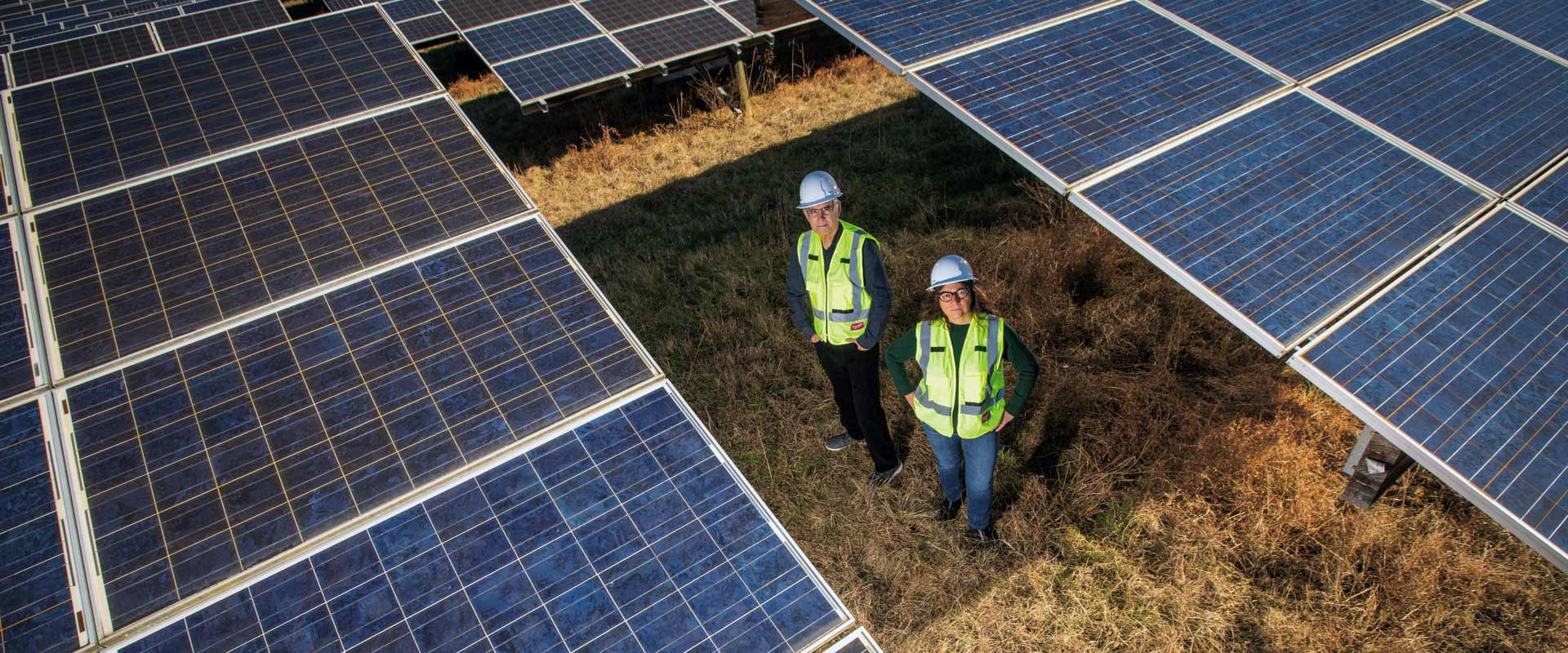Avner Vengosh and Erika Weinthal got just as bored as you did during the most extreme portions of the pandemic lockdown. Both professors at the Nicholas School of the Environment (Vengosh is Nicholas Distinguished Professor of Environmental Quality and Weinthal is professor of environmental policy and public policy), the two did not start crafting dioramas or scoping social media for better sourdough bread recipes.
Instead, they put solar panels on the roof of the house they share. Then they did the math to see how much water they saved. Then they published a paper about it.
“People talk about emissions, which is important, obviously. But the water footprint, the huge water footprint, is usually missed.”
-VENGOSH
OK, wait: They were measuring how much water they saved? Solar panels are good because they reduce emissions and keep carbon out of the atmosphere, right? Of course, says Vengosh. “People talk about emissions, which is important, obviously. But the water footprint, the huge water footprint, is usually missed.” And that footprint is everywhere: the way coal ash lands in and pollutes lakes; the way water is used in cooling towers and hydroelectric generation; the way water is contaminated by fracking for natural gas. Vengosh and Weinthal actually wrote the book about water use in energy, “Water Quality Impacts of the Energy-Water Nexus,” published in 2022. Clearly, water use was already on their minds as they installed their rooftop solar.
“With the solar you get the software that calculates how much CO2 you are saving,” Vengosh says, “how many trees you are virtually planting.” Every day on that software he watched his little virtual forest grow, “and that kind of triggered the idea … why don’t we do it for water, too?”
Weinthal’s work focuses on the worldwide politics of energy and water, and she’s quick to point out that while their recent paper in Science of the Total Environment that explained their findings focused on North Carolina and the United States, the supply chain, as ever, is complicated. Producing solar panels uses much less water than fossil fuel extraction and generation, but “the water that will go into producing this solar installation, those costs will be borne largely by the producing states in China, which also has issues of water scarcity.”
That is, the solar panels on their roof will reduce emissions worldwide and cut water use from energy production nearby, but the water stress of their creation will be borne by people far across the world. This is often the case with the extraction of resources, such as the lithium needed for battery storage. Solar energy reduces emissions and saves water – it’s a win-win for the climate. But it’s far from simple, given that the people most affected by the extraction and creation of the panels and batteries are commonly far from the people benefiting most from their use.
This is the kind of complexity that Vengosh and Weinthal love to think about. Solar and other renewables are advancing, and though they are a necessary improvement, their benefits are distributed in complex ways.
“This is coming,” Vengosh says. And while, at the moment, the two are thinking about water, before long the current generation of solar panels will need replacement and recycling. “Thirty years from now, that is going to be what’s happening again,” Vengosh says – the next revolution. “We don’t think about it right now. But it’s something we need to address.”





